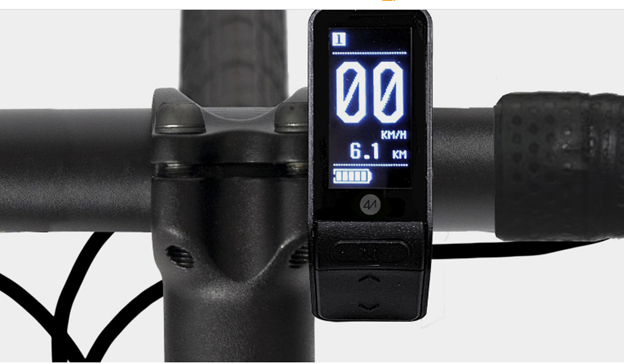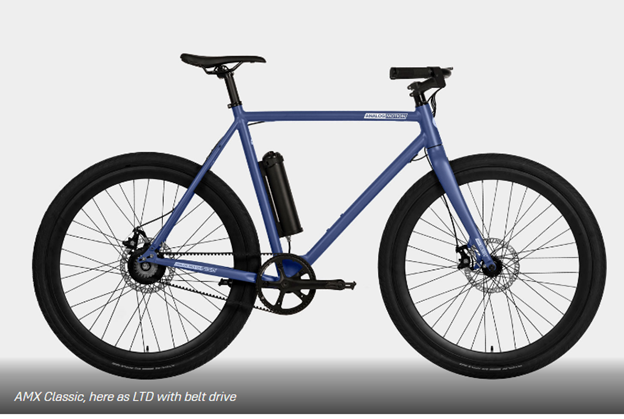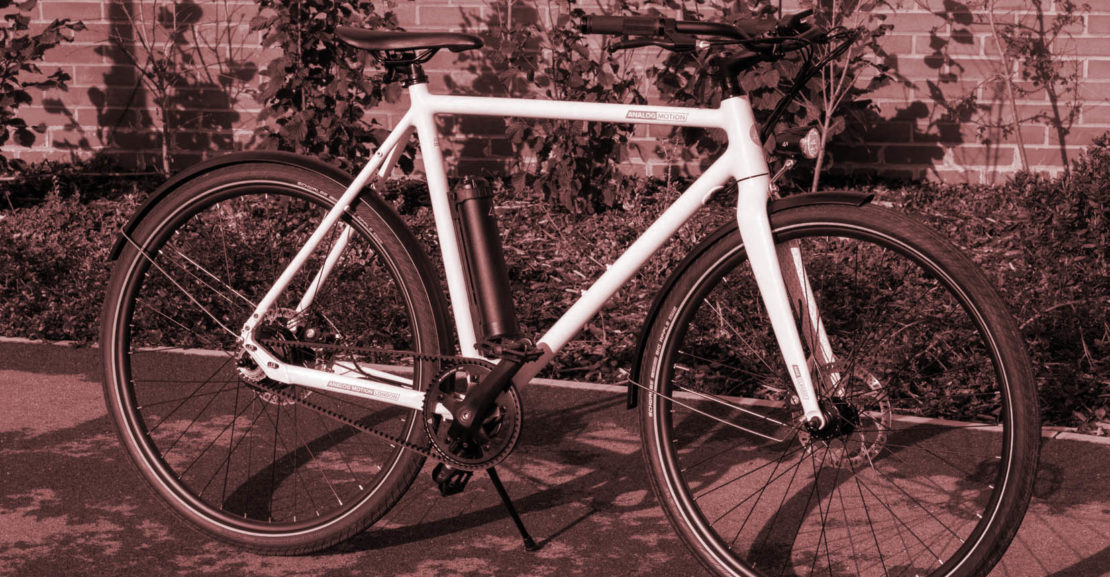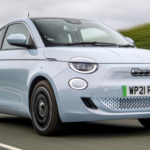I’m always on the hunt for affordable but high-quality e-bikes. Not everyone can spend thousands of dollars, after all, on something by Riese & Müller or Gazelle. That’s why Analog Motion, a small company based in the UK, grabbed my attention back in 2019. The startup had already run a crowdfunding campaign for the AM1, a pedal-assist bicycle that could be snapped up for only £499 (roughly $665) early on. And, maybe more importantly, it had followed through and delivered the product to backers. Now it was back the AMX, a new bike, and some similarly staggering prices on Indiegogo. Obviously, I was interested to see if the company had struck a similar balance between performance, price and quality.
In October 2019, I met the group in London and rode an early version of the bike. I was impressed by the comparatively lightweight and minimalist design but had some problems with the rear-hub motor, which stopped and started unexpectedly. I knew it was a prototype, however, and appreciated that the company would likely make some changes. After thirteen months, Analog Motion has shipped the huge majority of AMX bikes to backers. The design has transformed a bit, so I was clearly keen to review the bike and find out whether my complaints had been addressed. And whether other manufacturers should be nervous of this fast-rising upstart.
Design
First, a quick description of the AMX lineup. During its crowdfunding campaign, Analog Motion proposed the bike in three basic frame shapes: a low-step alternative, Classic and a Mini version that had smaller 20-inch wheels. Backers could then pick from a few diverse tiers which changed some fundamental components. Oh, and the Classic could also be purchased as a sportier Road type with drop handlebars. The cheapest Classic, Mini, and low-step designs could be earmarked for €499 (about $592) at first. These “early bird” deals soon disappeared, but if you live in Europe, it’s still likely to buy a limited edition (LE) version of low-step models and the Classic for £1,789 (approximately $2,351) through the company’s storehouse.
I’ve been trying the Classic LE in a plainly Bianchi-inspired mint color. Original? No, but I don’t really care. The AMX is an attractive bicycle that wouldn’t look out of place on the streets of London, Amsterdam or Berlin. That’s despite the battery, which Analog Motion has made no effort to hide. It’s fastened to the seat tube and, from a distance, appears just like a 1-liter water bottle. As stated by the team, that was by design. If somebody is standing a few meters away, they might actually mistake it for a drink — a good bonus if you want to have the bike’s electrification on the down-low. But it also means you can keep a new battery in bag pouches that were initially meant for water bottles.
Similar to the AMX has swept-back handlebars that support a more upright riding position. Analog Motion’s expectation is that people will spend more time looking at the traffic flow around them, instead of the piece of concrete that’s directly ahead of their front wheel. That will keep them securer and, if it’s quiet, give them a chance to appreciate their surroundings. To refer to one of my best friends, the handlebar grips can feel “a little spiky” against your skin. However, I didn’t mind the textured rubber because I’m always wearing gloves in the UK’s colder months.
Below the grips are two plastic levers that activate the Tektro mechanical disc brakes. They were slightly soft for my liking and squealed occasionally in the rain. It’s possible to modify them, though, and I suspect any bike shop could do it on your behalf within five minutes.
A simple bike computer is connected to the left-hand side of the handlebars. Analog Motion has improved this part since the pre-release bike that I rode back in October 2019. The OLED display has been changed for an LCD panel that’s easier to read in dazzling sunlight. The computer has also been relocated from the center of the bike — which was one of my biggest complaints with the pre-release variety — so that you can hit every button without taking your hands off the handlebars.
The AMX’s control center isn’t glitzy — unlike the VanMoof S3’s Matrix Display, or GoCycle’s Formula 1-inspired Cockpit LEDs — but the screen offers all the basic information you need while riding. That includes the current power level, speed and the remaining charge. Two physical arrow buttons alter the motor level, while a third ‘M’ option pins between your current trip distance and lifetime mileage.
You’ll need to long-push an orange button on the side of the computer to turn the AMX on. But that’s it. There’s no physical key or companion app to worry about. No Morse code-inspired button or rear-wheel ‘stealth lock’ sequence. You just push a single button, swing your leg over and go. It’s a trade-off between security and simplicity. Yes, the AMX is easier to start and ride, but it does nothing to fight thieves. If you want to leave this two-wheeler outside a café or store, you’ll need to bring a conventional lock. Maybe two or three, depending upon the location and its repute for e-bike robbery.

While the AMX is on, you can push the orange button again to toggle the front and rear lights. They’re not part of the frame like Cowboy’s third-generation and VanMoof’s S3 e-bike. But I favor them to the lights found on the similarly-cheap RadMission 1. The round headlamp at the anterior, for instance, is more chic than the oval-shaped one provided by Rad Power Bikes. The small Spanninga backlight, meanwhile, is joined to the saddle, rather than a piece of metal bolted to the frame. The constituents on the RadMission 1 are more functional, however. If the lights are switched off, for instance, the back one will lighten when you tap the brake levers, just like a moped or car. Till now, the AMX has no such alternative.
Yet, I’m happy with the lights that Analog Motion chose. However, I’m less stimulated about the wiring at the front of the bike. Like the RadMission 1, no cables are routed via the handlebars. That means they hang over the wheel before plunging inside a hole located on the foot of the downtube. Analog Motion has employed some cable tidies to lessen the mess, but it’s an unwelcome flaw on the bike’s otherwise clean design.
Wiring aside, there’s little to criticize about the AMX’s appearance. The final version has thinner rims than the pre-release model I rode back in 2018. Some will say that thick rims are better on a bike designed for the city, so why make the change? “It began as simple as the fact that a typical U-lock could not fit through a deep rim with that huge tire on it,” Analog Motion co-founder Jack Chalkley described. “Simple as that. And then when we had the shallow rims, we comprehended that they were lighter as well. So two birds, one stone.” In my opinion, those benefits are worth the aesthetic compromise.
Performance
My biggest grumble with the pre-release AMX was its motor. As I stated in my hands-on preview, it would kick in aggressively and push the bike forward with a nasty jolt. Then, as soon as I hit high speed, it would unfasten just as quickly. The bike was clearly strong, but the application of that power was unsatisfactory. I would start pedaling and rapidly reach a velocity where my footwork had zero effect. The second I stopped, the motor turned off and the bike slowed down. I was continuously alternating, therefore, between deceleration and acceleration. Pedal then slide, pedal then slide. It just didn’t feel natural.
“We empathize with that,” Chalkley said. “It’s something that we noticed as well.” Analog Motion dealt the problem with some firmware updates. The ride is overall smoother now, with a steadier application and removal of power. Still, the AMX is unquestionably aggressive. You won’t feel it straight away because the bike isn’t speedy from a standing start. (The kind I rode also didn’t come with the company’s optional throttle.) Though, after a few brief seconds, the AMX bursts forward like a greyhound that’s suddenly been set off its leash. Even on the least power level, the motor handles flat roads and gradual inclines with ease.

It only decelerates on hills, really. And when that occurs, there’s always a higher power level to help you out. Otherwise, you can ride on the highest power setting all the time. But then you meet the same problem that the pre-release model had. As soon as the bike reaches top speed — and on power level five, that happens almost suddenly — your pedaling makes zero difference. The single gear is too low. You then have two options: put effort intermittently, which causes the motor to start and stop, or pedal nonstop at breakneck speed, even if you can’t feel a little of resistance.
Other AMX owners have observed this. “On the AMX I get minimal [or] no pedal resistance except that I catch up to the speed the motor wants to go at,” one AMX owner wrote in the official forums. Navid Gornall, one of Analog Motion’s founders, replied with: “The AMX has more power than others which is a deliberate decision. I hope that you grow to love the security and power that high torque can provide, especially on less forgiving ground and when boosting away from traffic and lycra-clad cyclists. Make sure to smile at them as you shoot off into the distance.”
I was happier once I started using the power levels like coventional bicycle gears.
It’s certainly fun to run around at the bike’s top speed, which is 25KMH (15.5MPH) in Europe and 32KMH (20MPH) in the US. (You can change the limit through the handlebar computer, so there isn’t much to stop Europeans from selecting the higher US restriction.)
After some time, though, I craved a slower and more natural riding experience. So I rode mainly in level one or two, then increased the power level to five whenever I moved toward a steep hill. I normally have a ‘set it and forget it’ method to e-bike motors, but with the AMX, I was happier once I started using the power levels like conventional bicycle gears.
Analog Motion knows that some people have problems with the motor’s tuning. If you’re really struggling, the company has released some documentation that describes how to access and change a hidden ‘P14’ setting that changes the overall level of assistance.
The motor and chain ring are joined by a Gates carbon belt drive. It’s cleaner and more hard-wearing than the ordinary chain that comes with the City and Capital versions of the AMX. Analog Motion isn’t the first to adopt this kind of drivetrain, though. Many rival manufacturers, including Gogoro and Cowboy, have adopted belt drives because they make their e-bikes more dependable — which reduces repairs and complaints— and attractive to commuters who want to cycle without getting muck or oil on their clothes.
Range and charging
The AMX vows 27 miles (44KM) of assisted riding on a single charge. For an e-bike, that’s less. Real low. As a contrast, VanMoof’s S3 can achieve anywhere between 37 and 93 miles (60-150KM) depending on the rider, power level and terrain. However, Analog Motion isn’t bothered by these numbers. The reasons are dual. First of all, the company believes that few commuters travel more than 27 miles (43.45 km) every day. Next, it’s easy to take the battery off the bike. You simply unfasten a rubber strap and lift the bottle-shaped power pack off its plastic base. That means you can charge the battery in an apartment or at the office far away from the bike.
The smaller capacity also makes it faster to charge. Analog Motion’s battery takes only three hours to replenish, which is quicker than VanMoof’s S3 and only 30 minutes more than Gogoro’s carbon-fiber Eeyo 1s, which only needs a tiny battery in its rear ‘Smartwheel’ hub. A smaller battery provides weight benefits, too. The AMX LE comes in at about 16KG, which is 5KG better than VanMoof’s S3 and 2KG less than Cowboy’s third-generation e-bike. You can find lighter alternatives, but most of them depend on carbon fiber frames. The AMX, thus, is competitive in the weight department, though it’s still a job to lift up a flight of stairs.

If you’re eager for more range, you can always stock a backup battery. At £285 (about $377), they’re hardly an urge purchase.Yet, the option is there if you’re planning a cross-country cycling trip or work somewhere that’s distant away from home and doesn’t have an easily-available power socket.
Wrap-up
The AMX is a very particular type of e-bike. Short-range. Aggressive motor. No ‘smart’ features. How many people are in the market for a two-wheeler like that? Ample, apparently. Analog Motion’s Indiegogo campaign was a big success, raising over $1.5 million from over 1,300 backers. The company has already proven, therefore, that many people are content with a simpler and more controlled e-bike — given the price is right. And clearly, the ‘early bird’ deals were adequate to tempt cyclists that don’t have hundreds of dollars to burn on a VanMoof S3.
“We built this company to make a product for ourselves, family and friends,” Gornall said. “All our backers are an addition of that experience.”
The LE version I’ve been riding was never €499 (about $592), though. It was initially sold for €884 (about $1,044), which is even lower than Rad Power Bikes’ RadMission 1. At that price point, I think the high-end AMX is a wonderful deal. It’s more sophisticated than the RadMission, uses a belt drive and comes with some fundamental accessories including fenders and a kickstand. In that particular head-to-head, I would select the AMX over the RadMission.
Today, though, the AMX LE costs £1,789 (roughly $2,368). That puts it in straight contention with Cowboy’s third-generation e-bike and VanMoof’s S3. Here, Analog Motion’s sophomore effort is harder to endorse. The tuning of Cowboy and VanMoof’s motors will suit a wider range of riders. They have frames with incorporated lights and all types of other technology features, like GPS tracking, that Analog Motion doesn’t offer. The AMX LE only comes out ahead if weight is your topmost priority and you favor a simpler, more stripped-back design.
The AMX isn’t for everybody, but neither is a Lamborghini. I’m just happy that Analog Motion followed through on its second crowdfunding campaign and now has the opportunity to make a successor. The UK doesn’t have several e-bike brands, and this gutsy startup has already proven itself to be one of the best in the intensely competitive commuter e-bike space.


